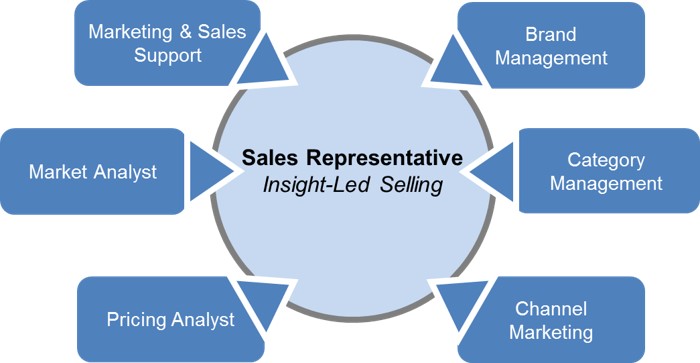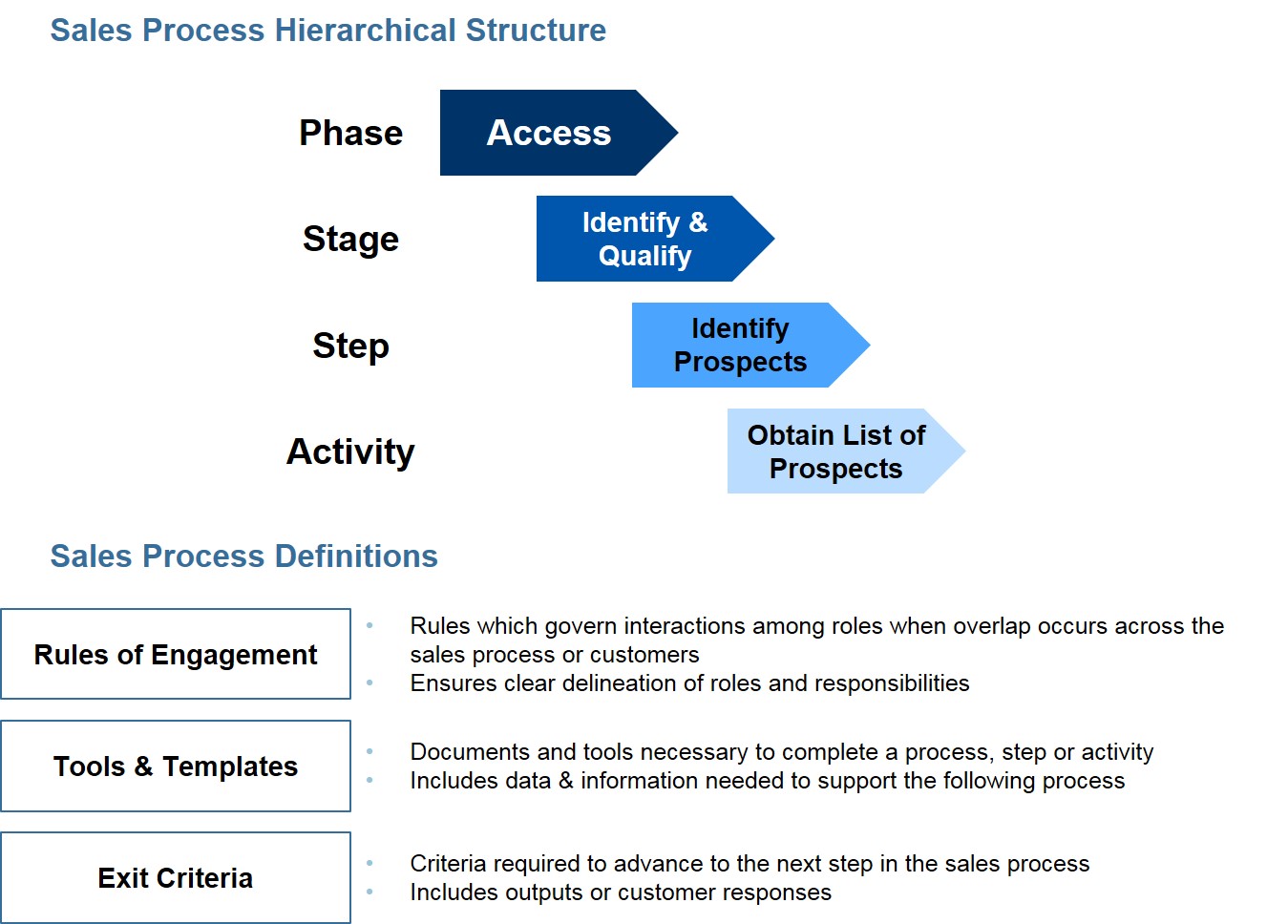Sales Playbooks: Coordinating a Marketing-Driven Sales Process

What can organizations struggling with sales process learn from leading consumer packaged goods (CPG) companies? A lot. Best practice marketing-driven CPG companies apply both quantitative and qualitative methodologies to support growth. They elevate brand relevance, increase share and precisely target consumers. And they incorporate the right process and training into an effective sales process playbook CPG best practice extends beyond the retail industry. Many B2B sales models can benefit from the marketing-driven sales process playbooks that successful CPG companies employ.
With the plethora of market data and consumer analytics available to CPG companies, new marketing roles and enhanced existing roles have emerged. Leading CPG companies recognize and utilize the valuable insights these roles create. Used effectively, sales process playbooks are instrumental to the development, documentation and delivery of sales processes to coordinate marketing and analytics resources.
Insight-led Selling
Best in class CPG sellers provide their customers with more than products. They deliver valuable insights tied to marketing analysis.
- What mix of product flavors should the retailer sell to minimize cannibalization and target the retailer’s intended demographic?
- What price structure should retailers use to maximize revenue and profitability?
- Which trade promotions should occur to drive incremental revenue? When should they occur?
- What are the nuanced buying behaviors among different regional and socio-economic consumers?
- How should retail display product to best attract purchases?
These insights drive consumer behavior and, ultimately, increase revenue. The more a retail customer relies on the CPG company’s insights, the more likely the customer will move from a seller-customer transaction to a solution-based partnership. Coordinating marketing insights is a tall task for many organizations stretched thin for both sales and marketing resources.

Efficiently Executing Insight-led Selling
To fulfill growth aspirations, many sales leaders believe that the answer is to bulk up one or both functional areas. While this may be appropriate in certain circumstances, the answer often lies in doing more with the resources available. Accomplishing this requires an efficient sales process to align and coordinate marketing and sales efforts.
Sales leaders and sales representatives alike often cite many of the same challenges when discussing their go-to-customer process:
- “Sometimes it kind of just falls through the cracks at that step …”
- “I don’t get the details I need, so there is a lot of back-and-forth which delays the process.”
- “I can’t reach who I need when I need them.”
- “We struggle to meet the turnaround time that our customers expect.”
While these frustrations are common at many CPG companies, best-in-class organizations have muted these concerns through a detailed sales process. Detailing a codified sales process among the different roles to efficiently support new, cross-sell and upsell opportunities at strategic customers serves a few vital purposes. First, it ensures essential marketing access to the customer. This educates the retail customer with unique category and brand insights while establishing a feedback loop, providing marketing with important customer access to further enhance insights. Second, a detailed sales process creates efficiencies by articulating needs: who needs what and at which point in the sales process do they need it? Such a sales process holds cross-functional resources accountable for meeting expectations. There is no ambiguity about where responsibilities lie. The process of developing the playbook often exposes inefficiencies to enable a more effective process moving forward.
Sales Process Playbook Components
What are the components that go into a codified sales process? There are many requirements that a playbook can address to ensure that activities do not “fall through the cracks.”
- Documented sales process phases, stages, steps and detailed activities
- Confirmation of all roles involved with detailed rules of engagement
- Tools and templates required at specific steps
- Exit criteria required to proceed to the next stage of the sales process

A sales process playbook creation is about developing a future-state process, not regurgitating current practices or adding bureaucracy.
How the Sales Role Changes
What does all of this mean for the seller? Many sales representatives need to shift from a transaction-based sales role to that of a strategic account manager. This often requires more effort in pre-sales activities during prospecting, market development and account planning. Also, sellers need to adjust their role as a single point of contact to strategically coordinating resources to support the process. Sales representatives need to fully understand their individual accounts, so they can coordinate resources. It is important that the resources deliver a value-differentiated message that resonates with consumers and ultimately leads to a sale.
A Final Word on the Sales Process
Because many CPG companies are marketing-driven, sales teams need to frequently collaborate with marketing counterparts or risk becoming a commodity product. This type of collaboration requires a detailed sale process as sellers shift into strategic manager roles. Documenting this in the form of a sales process playbook eliminates ambiguity, increases efficiencies and ensures accountability among all sales process stakeholders. By deploying this tool, many companies can benefit from what best-in-class CPG companies do to deliver value through insight-led selling.
Is your organization effectively collaborating to drive insights? The Alexander Group (AGI) can help. Contact an AGI Playbooks practice leader to learn how.
Read more Alexander Group insights on sales process.